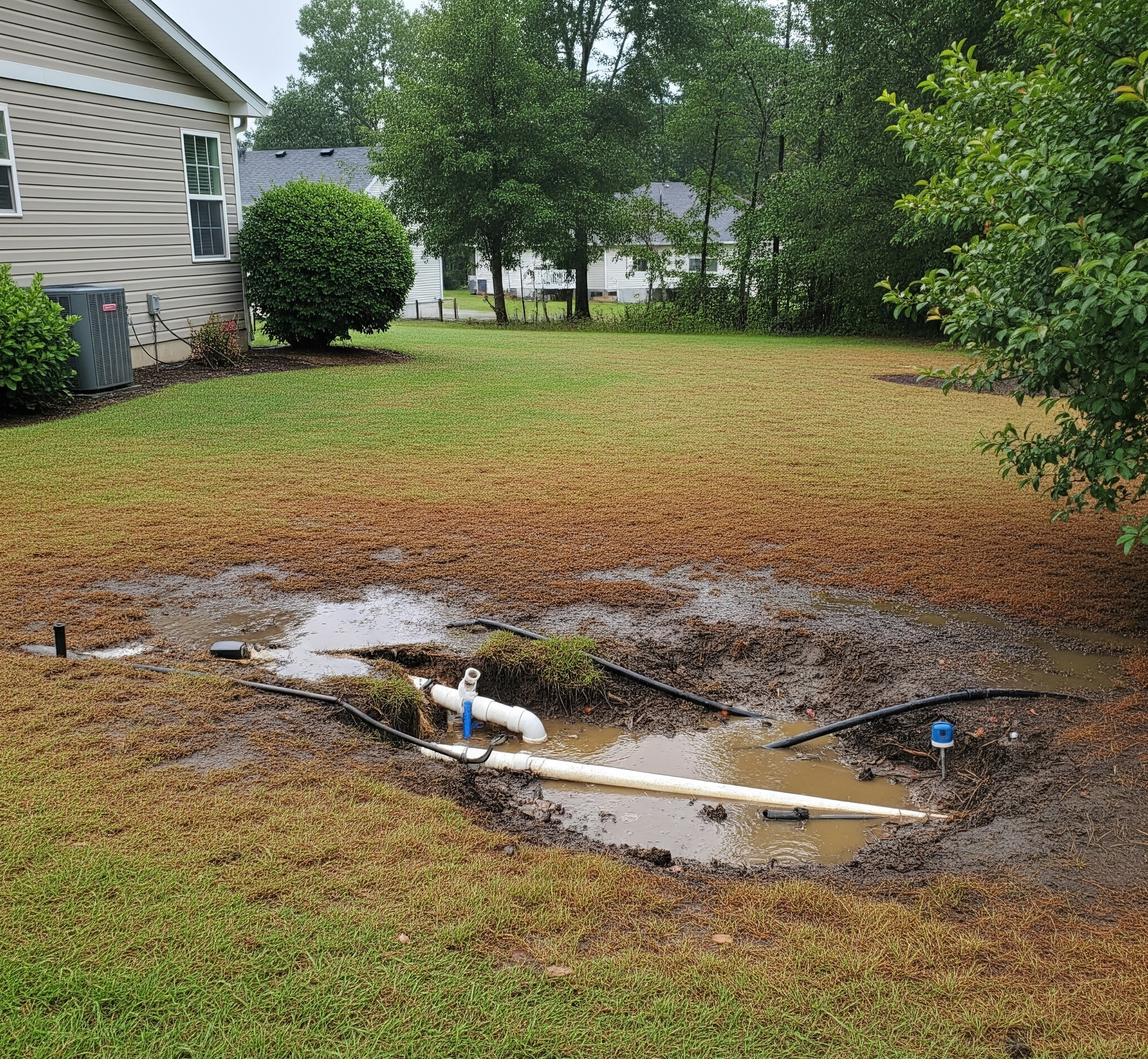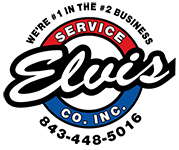
22 Jul Drainfield Woes: Causes, Signs, and Your Best Solutions
The septic system is a silent workhorse, diligently processing your household wastewater. While the septic tank itself often gets the most attention, the unsung hero of the system is undoubtedly the drainfield (also known as the leach field or absorption field) at your home in South Carolina. This crucial component is where the treated wastewater from your septic tank is dispersed and naturally filtered into the soil. But what happens when this vital part of your system starts to fail? Understanding drainfield failure signs, common causes, and available solutions is key to maintaining a healthy septic system and avoiding costly headaches such as septic services.
The Drainfield’s Crucial Function: Where Wastewater Disappears (Safely!)
After solid waste settles in your septic tank and is broken down by bacteria, the remaining liquid effluent flows out into the drainfield. This area consists of a network of perforated pipes laid in gravel-filled trenches, covered with soil. The effluent slowly seeps out of these pipes, filtering through layers of gravel and soil, where natural processes remove remaining impurities before the water re-enters the groundwater. Essentially, the drainfield is your septic system’s natural purification plant.
The Root of the Problem: Common Causes of Drainfield Failure
Unfortunately, drainfields aren’t invincible. Several factors can lead to their demise:
- Clogging (The Most Common Culprit): Over time, solids (even small ones that escape the septic tank) and biomat (a slimy, organic layer that forms naturally) can accumulate in the drainfield pipes and soil pores. This prevents the effluent from properly dispersing, leading to backups.
- Poor Septic Tank Maintenance: Infrequent or improper septic tank pumping allows too many solids to pass into the drainfield.
- Flushing Non-Biodegradable Items: Wipes (even “flushable” ones), feminine hygiene products, excessive grease, and harsh chemicals can overwhelm the system and contribute to clogging.
- Excessive Water Use: Flooding the system with too much water too quickly doesn’t allow the drainfield enough time to absorb and process the effluent.
- Soil Compaction: Heavy vehicles (cars, trucks, construction equipment) driving over the drainfield area can compact the soil, reducing its ability to absorb water. Even prolonged foot traffic can contribute.
- Root Intrusion: Tree and shrub roots are constantly seeking water and nutrients. If planted too close, they can grow into and clog the drainfield pipes.
- Improper Installation or Design: An undersized drainfield for the household’s needs, incorrect grading, or poor soil percolation can lead to premature failure.
- Age and Natural Wear: Even well-maintained drainfields have a lifespan, typically 20-30 years. Over time, the soil’s absorption capacity naturally diminishes.
- Saturated Soil: Prolonged heavy rainfall or a high water table can saturate the soil around the drainfield, making it impossible for the effluent to disperse.
Spotting the Trouble: Common Drainfield Failure Signs
Catching problems early can save you significant time and money in Myrtle Beach SC. Be on the lookout for these common drainfield failure signs:
- Wet Spots Over Drainfield: Perhaps the most obvious sign. If you notice standing water, spongy ground, or unusually lush, green grass directly over your drainfield, it’s a clear indication that effluent is surfacing because it can’t be absorbed. These wet spots over drainfield areas are not only unsightly but also a health hazard.
- Foul Odors: A persistent septic smell in yard, particularly near the drainfield area or around your septic tank, is a strong indicator of surfacing sewage or a failing system.
- Slow Drains and Backups: If multiple drains in your home (sinks, showers, toilets) are slow to drain or if sewage is backing up into your plumbing fixtures, your drainfield is likely overwhelmed and unable to accept more effluent.
- Gurgling Sounds: Unusual gurgling noises from your plumbing when water drains can indicate blockages or issues with air displacement within the septic system.
- Pest Infestation: Rodents, insects, and other pests are attracted to the moist, nutrient-rich environment of surfacing sewage.
Repair vs. Replacement: Exploring Your Drainfield Repair Options
Once you’ve identified drainfield failure signs, the next step is to determine the best course of action. This typically requires a professional septic inspection to accurately diagnose the problem. Your drainfield repair options will depend on the cause and severity of the failure:
- Minor Clogs/Maintenance Issues: If the issue is minor clogging due to biomat buildup or solids, hydro-jetting (using high-pressure water to clear pipes) or a specialized “shock” treatment to break down biomat might be possible. Sometimes, simply addressing water overuse or fixing a leaking fixture can alleviate pressure on the system.
- Drainfield Rehabilitation (Limited Cases): For some systems, processes like terralifting or deep tilling can sometimes rejuvenate a compacted or mildly clogged drainfield by breaking up the soil and improving aeration. This is not a universal solution and depends on soil type and severity of damage.
- Pipe Repair/Replacement: If only a small section of your drainfield pipes is damaged or crushed (e.g., by vehicle traffic), it might be possible to excavate and replace just that segment.
- Diversion/Distribution Box Repair: Issues with the distribution box (which splits effluent flow to different drainfield lines) can sometimes be repaired, allowing for more even distribution and preventing overloading of one section.
- Full Drainfield Replacement: Unfortunately, for widespread clogging, severe compaction, extensive root intrusion, or an aging system that has reached the end of its life, a complete drainfield replacement is often the only long-term solution. This involves excavating the old drainfield and installing a new one according to current codes and soil conditions. This is the most expensive option but ensures a properly functioning system for decades to come.
- Alternative Systems: In cases where a conventional drainfield isn’t feasible (e.g., poor soil, small lot size), alternative septic systems like mound systems, aerobic treatment units, or sand filters might be considered.
Don’t Delay: The Importance of Professional Help
Addressing drainfield failure signs promptly is crucial. Ignoring the problem will only lead to more severe damage, potential health hazards, environmental contamination, and significantly higher repair costs down the line. In Blakely, Pennsylvania, like many other areas, local health codes govern septic system repairs and replacements.
If you suspect your drainfield is failing, contact a qualified and licensed septic system professional immediately. They can accurately diagnose the issue, explain your drainfield repair options, and guide you through the necessary steps to restore your septic system’s health and ensure your property remains safe and compliant. Don’t let your silent workhorse become a costly headache!


Sorry, the comment form is closed at this time.